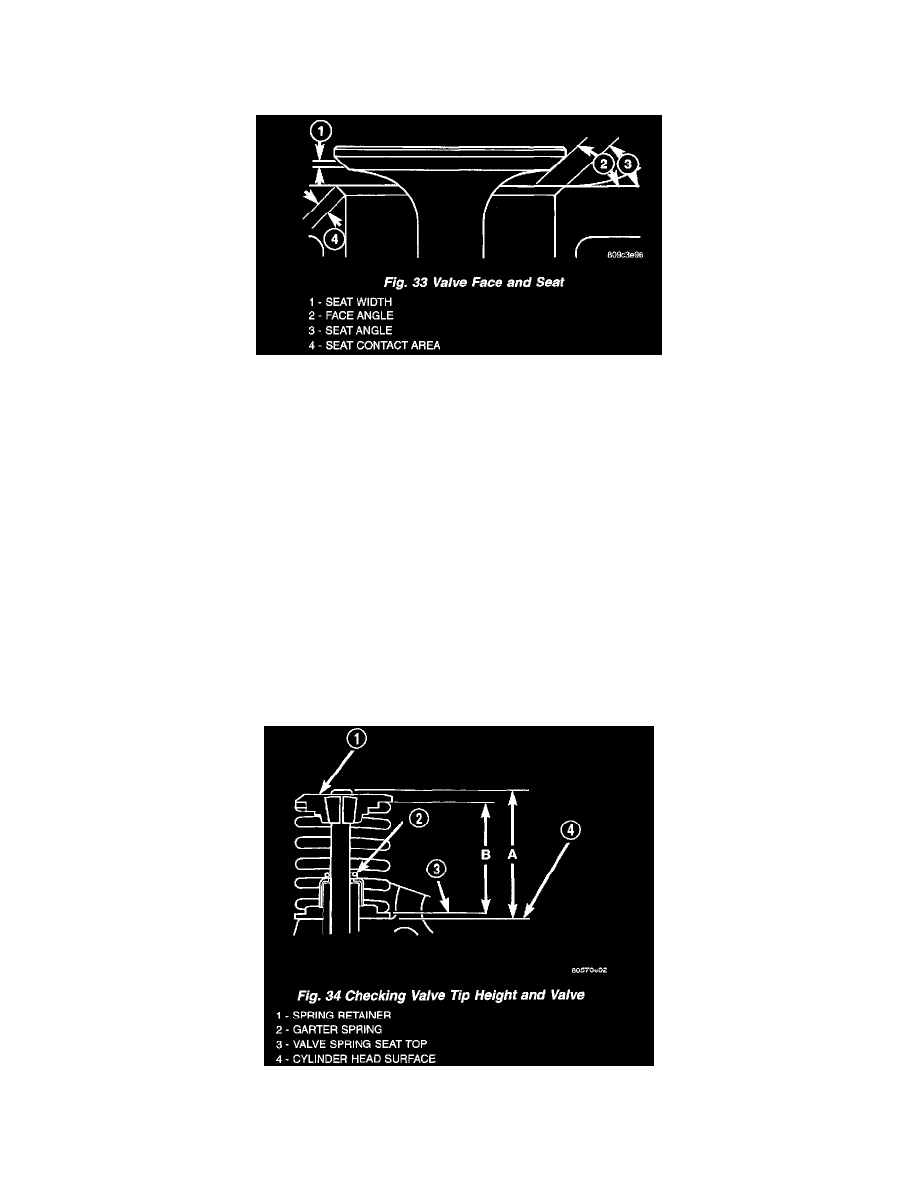Stratus Sedan V6-2.7L (2001)

Valve: Service and Repair
Refacing Valves & Seats
VALVE AND VALVE SEAT REFACING
The intake and exhaust valves have a 44.5 to 45 degree face angle. The valve seats have a 45 to 45.5 degree face angle. The valve face and valve seat
angles are shown in (Fig. 33).
VALVES
Inspect the remaining margin after the valves are refaced.
VALVE SEATS
1. When refacing valve seats, it is important that the correct size valve guide pilot be used for reseating stones. A true and complete surface must be
obtained.
2. Measure the concentricity of valve seat using dial indicator. Total runout should not exceed 0.051 mm (0.002 inch) total indicator reading.
3. Inspect the valve seat with Prussian blue to determine where the valve contacts the seat. To do this, coat valve seat LIGHTLY with Prussian blue
then set valve in place. Rotate the valve with light pressure. If the blue is transferred to the center of valve face, contact is satisfactory. If the blue
is transferred to top edge of valve face, then lower valve seat with a 15 degree stone. If the blue is transferred to the bottom edge of valve face,
then raise valve seat with a 65 degree stone.
NOTE: Valve seats which are worn or burned can be reworked, provided that correct angle and seat width are maintained. Otherwise cylinder
head must be replaced.
4. When seat is properly positioned the width of the intake 1.00 to 1.50 mm (0.0394 to 0.0591 inch) and exhaust seats should be 1.25 to 1.75 mm
(0.049 to 0.069 inch) (Fig. 33).
5. Check the valve spring installed height after refacing the valve and seat (Fig. 34).
VALVE AND SPRING INSTALLED HEIGHT
1. Coat valve stems with clean engine oil and insert them in cylinder head.
